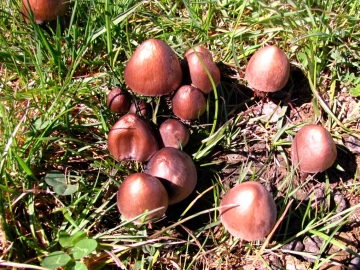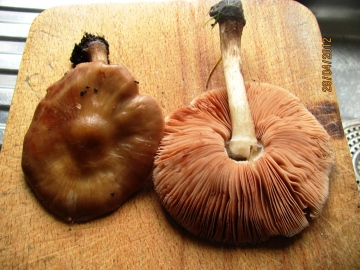Mary - Alexanders does not seem to have spread along the A12 to Ingatestone as yet, my only records being a single plant in a local car park, the seeds having no doubt arrived glued to a car tyre, and also a roadside verge at nearby Highwood. It also occurs at Pleshey Mount or Castle and there is a suggestion that it was first introduced here as a vegetable by Augustinian monks in the middle ages. Did try chewing on a leaf once but quickly decided that Augustinian monks had a stronger palate that mine! Have you noticed, also, that although the blooms are prolific they seem to attract very few insects? The same is true of Elder blossom but someone once told me that the flowers contain a natural insecticide and were once used as such by immersing them in water overnight. An old wives tale?
Weather-wise it was another grim week; cold and wet on Monday, Tuesday, Wednesday, Thursday and Saturday! It has been a disastrous week for breeding birds at Blue House, the Lapwings suffering particularly badly. The young were due to hatch from the earliest laid clutches but they all seem to have died almost as soon as they emerged from the egg. The weather during their first week of life is crucial for young wader chicks as they need to feed themselves within an hour or two of hatching and keep reasonably warm and dry until their strength increases. Their parents can shelter them from the occasional heavy shower but they cannot survive the repeated torrential downpours we experienced this week, while the cold weather means that there are few invertebrates on which to feed. There is now more standing water on the reserve than at any time during the past two years and most of the ditches - where water levels were way below normal three weeks ago - are overflowing, resulting in the loss of several Dabchick nests; probably others species such as Mallard, Moorhen and Meadow Pipit as well. Coot are more adaptable. As water levels rise they frantically add sticks to their nests but when they subside again the incubating bird often finds itself perched on a two foot high pile of vegetation that makes them very obvious to potential predators and they have just as hastily to dismantle them again!.
What's bad for birds is, however, good for fungi and a number of species have appeared in the fields at Blue House this week including Fairy Ring Champignon Marasmius oreades, Yellow Fieldcap Bolbitius titubans, and both Egghead Panaeolus semiovatus and Bell-shaped Mottlegills P. papillonaceus var. parvisporus (top photo). The best find though was the Shield Pinkgill Entoloma clypeatum, (bottom photo)a spring species normally associated with the genus Rosaceae. In this instance they were growing in a pasture around ten yards from a hedgerow Dogrose so only just qualify!
For the rest, spring had little to offer. Like Mary commented, many early flowering Bluebells seem to have died back during the cold weather and the displays to be found round here are a bit below par. Wood Anemones though are having a glorious spring. My garden moth trap yielded a Muslin, Lunar Marbled Brown and Brindled Pug on 22nd, the first new species for the year since 1st April, a month that usually sees around thirty species emerging for the first time. Finally, on 24th, over a hundred Swifts came in off the sea at Blue House after the rain stopped and headed west along the River Crouch, their appearance a sure sign of the lateness of the season.

























